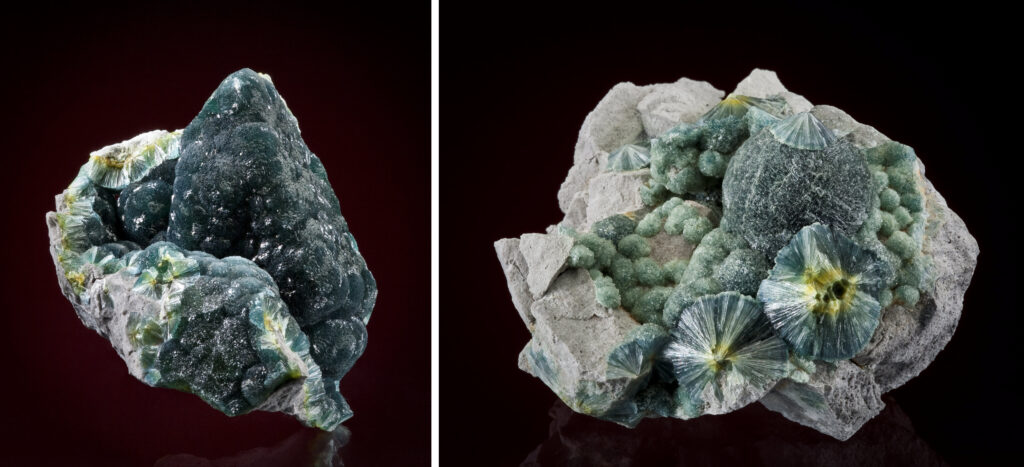Gem Focus – February 2024 – Featuring Wavellite: the radiating mineral popular with collectors
*Gem Focus & Market Pulse (Free Subscriber)Wavellite is one of those interesting minerals that sits mostly in the collector world, but when you see it, you instantly understand why.
Named after its discoverer, British surgeon Dr. William Wavell, wavellite mineral specimens on the market often occur as botryoidal aggregates, according to GIA, which refers to globular forms resembling a bunch of grapes. When these spherical clusters of wavellite are broken open, the cross section displays a signature radiating patterns formed by the needle-like crystals of which they are comprised.

These two Arkansas wavellite specimens are great examples
of the mineral’s occurrence as botryoidal aggregates.
(Photo credit: The Arkenstone, iRocks.com)
The most important occurrences of this mineral are in Arkansas, but according to Mindat.org, wavellite has also been found in Australia, Bolivia, Bulgaria, France, Germany, Ireland, Portugal, and Romania, among others. Its type locality is High Down Quarry, West Buckland, North Devon, Devon, England. But James Carpenter of Unconventional Lapidarist, who works with the material, told GemGuide there isn’t much material coming out of Arkansas right now, and not much comes from elsewhere in the world, so pieces are rare.
Wavellite’s color and quality varies greatly depending on the geological conditions of its formation and presence of impurities. It’s found in several colors, including white, green to yellowish-green, yellow, blue, brown, and brownish-black, although green is the most common color. Carpenter told GemGuide the blue material is the most in-demand for him, though there isn’t much of it, as well as those with a druzy.

Polished freeform wavellite pieces set into jewelry.
(Image courtesy of the Unconventional Lapidarist)
In addition to being collected as specimens, wavellite can also be used in jewelry, though that is rarer. According to GIA and Carpenter, wavellite has to be stabilized in order to make it durable for use due to both its low hardness (3.5-4) and its occurrence in the host rock. (Carpenter created his own product for stabilizing, he told GemGuide.) Once it is, it can be polished into cabochons or used without much polishing to show the true texture or radiating patterns.

These two Arkansas wavellite specimens show the blue color
in which the mineral can sometimes be found.
(Photo credit: The Arkenstone, iRocks.com)
Since its radiating crystal clusters can splinter, it’s very difficult to cut the gem, according to the International Gem Society, so lapidarists tend to create cabochons or freeform shapes from the material. It also means the pieces need protective settings, with pendants and earrings serving best for this purpose.
It should be stored away from other harder stones to avoid scratches. Wavellite should be cleaned using a soft brush, mild detergent, and warm water, the International Gem Society said.